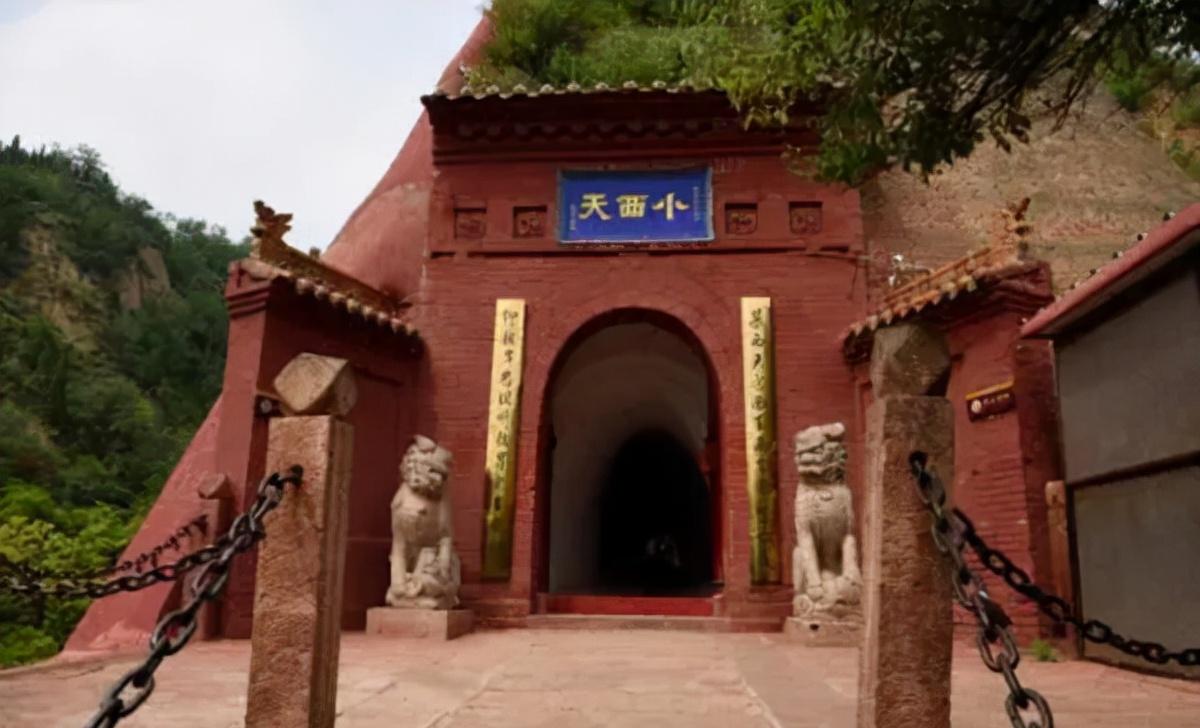In "Journey to the West", the Yellow Brow Monster set up a small Lei Yin Temple, and the Buddhas and things in the temple are all the same as the Lei Yin Temple, the destination of the sutra, in order to lure the Tang monks and disciples to be deceived. Did "Xiao Xitian", located 1 km west of the city of Yixian in Linfen City, Shanxi Province, steal the idea of the Yellow Brow Monster? Let's take a look at it together.

Xiao Xitian, formerly known as the Thousand Buddhas Temple, was founded by the Eastern Ming Zen master in the second year of Ming Chongzhen (1629), and it took 30 years to complete all the architectural makeup. Initially named because there are thousands of Buddha statues in the Daxiong Treasure Hall, it was later renamed "Xiaoxitian" to distinguish another Ming Dynasty temple in the south of the city, "Great Western Heaven".
Konishiten is a typical Buddhist Zen monastery. The whole temple has a building area of more than 1100 square meters, divided into two courtyards, self-contained and integrated. The Lower House OfeVitability Hall sits west to east, and is a meditation hall where monks chant. The hall contains wood-carved pavilions and dozens of bronze statues of Buddha. The Weituo Hall is opposite the courtyard of the Immeasurable Hall, and the Weituo statue in the hall is carved from a whole piece of Nan wood, and its appearance is mighty and the carving process is very exquisite. The North Room is a scripture house, which contains a rare book of the Ming Wanli Edition, which is well preserved, a total of 7310 volumes, with high academic and research value. There are two temple gates built on the side of the back of the Weituo Hall, which are inscribed with "Doubtless Road" and "Other Heaven", which can reach the peak of Gutong Peak.
The upper court is the essence of the whole temple, the front is the Daxiong Treasure Hall, and the two halls of Manjushri and Puxian stand on the left and right. The front of the main hall is lined with five interconnected Buddhist shrines, "Medicine Master", "Midas", "Shakya", "Pilu" and "Maitreya" and other Buddhas sit on the lotus platform, each decorated with brocade, with a relaxed demeanor and a kind face; the ten disciples stand on both sides, with beautiful shapes, vivid expressions, subtle expressions, and exquisite portraits. On the south wall of the hall are sculptured the stories of Buddhist characters such as "Four Directions and Three Saints" and "Four Great Heavenly Kings", and on the north gable of the hall are sculptured the thirty-three floors of "Yuli Heaven" on Mount Meru, the story of Buddhism and the bunsen legend of Shakyamuni. On the girder, the eight great Kongo are mighty and majestic, and the walls between the beams are draped with a magnificent "paradise world"; many human faces flying in the sky, sacred birds, peacocks, parrots, and cranes, swimming on the ethereal clouds, the twelve bodhisattvas, with a light posture, gentle and pure, perform the "Celestial Realm" song and dance from place to place. The entire hall, the Heavenly Palace Pavilion, layered, cloudy, misty, pastel makeup, presents a charming scene of the Immortal Palace Buddha Kingdom.
Sincerely recruit "three rural researchers", mainly engaged in research and legal assistance on issues related to rural development, and is a research work on agriculture-related issues and major project topics
For more information about Sannong, please pay attention to our official public account: Sannong Legal Research Center